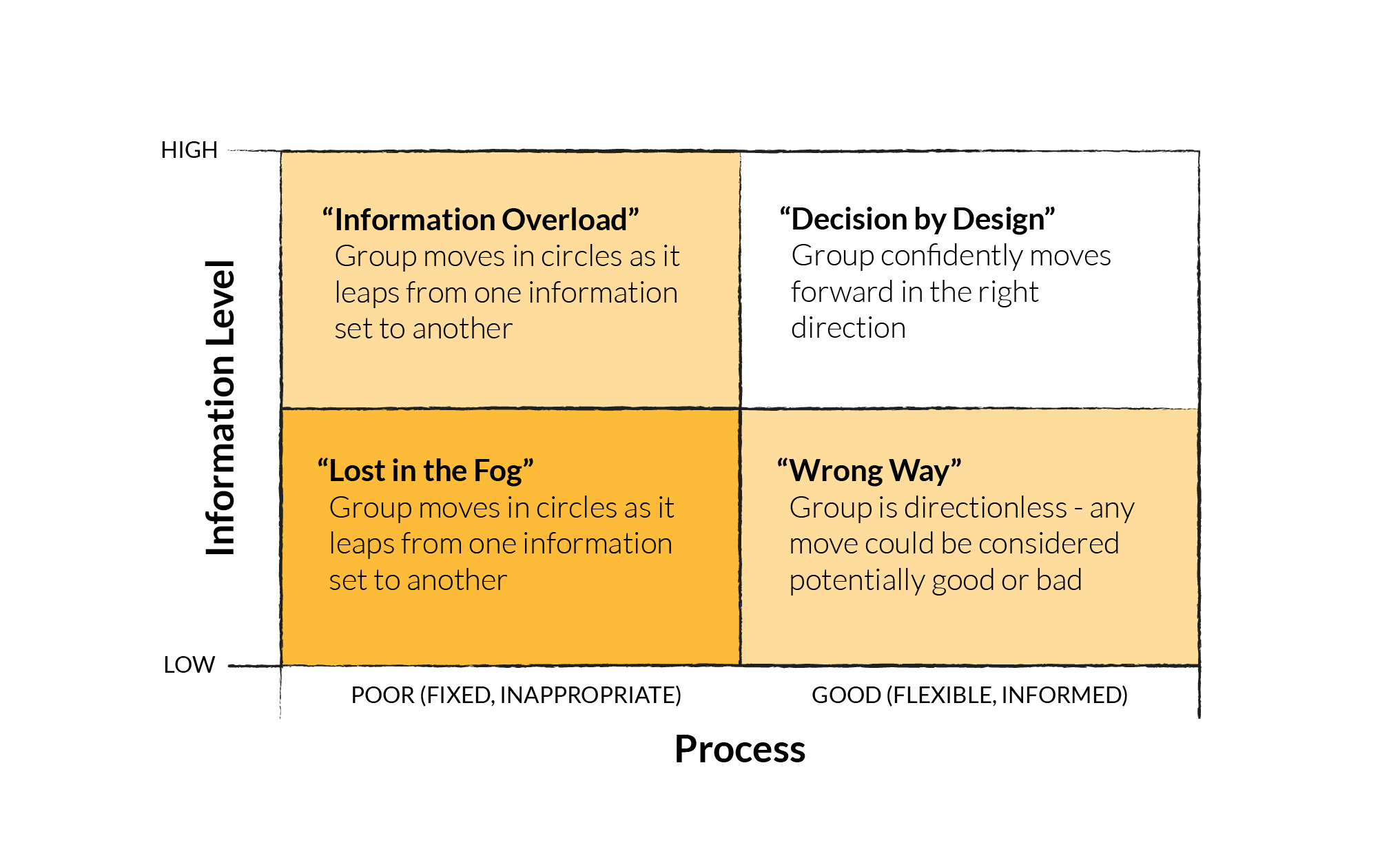
Decision making can be expressed simply as the effective processing of information to adesired outcome. Decision making is complicated by three factors:
1. The level and quality of information available
2. The number of potential options
3. The number of stakeholders who will influence, be involved in or be affected by the outcome
Quality of information
The large spread of variables within these three elements means that it is almost impossible for diverse groups and information points to make the optimal decision in a timely, efficient manner using traditional methods. Complexity can exist for decisions from the most operational, task-level questions and problems, through to the existential level of organisational ethos, values and purpose. It is important to consider all decision levels when designing and leading change.
Answering the right question
A good decision making process optimises a group’s ability to work informationin a collaborative way, to make good, sustainable decisions. The process is flexible – allowing a group to explore, build, test and iterate in the appropriate way, at the appropriate time for their work. This ensures the group is not “answering the wrong question” and engages all stakeholders in the authoring of their outcomes. It is important that the group does not come to closure too soon – thereby cutting off unexplored options that may be useful.
Iterative process
Successful decision making is a creative process. Ludic’s design-led approach to decision making is outcome focused and iterative. It requires concepting, building, testing and iteration. Thejourney may not be linear – in fact it is often necessary to move backwards and forwards, as we learn more about the challenge in hand and the context in which the solution must fit.
Consider the process of writing a song, for example. Until the tracks are laid down in the studio, the musicians, songwriters and lyricists often have different ideas, regardless of how they have struggled to communicate them to one another. But once the song begins to materialise digitally, the process becomes necessarily collective and the fields of visions collapse into the various takes, one of which will be packaged for distribution and consumption.
This doesn't necessarily mean that the artists are completely satisfied with the fidelity of the finished product to the original vision. Constraints of ability, budget, timelines and other factors will have modified the vision and the finished product may be quite different. This doesn’t imply that the first half of the process excludes collaboration, for quite the opposite is the case. Collaboration is a necessary component of every stage. So is independent work.

Find out more about how Ludic’s unique digital tools and world-class decision events can help your organsation collaborate more effectively and move forward in the right direction.



